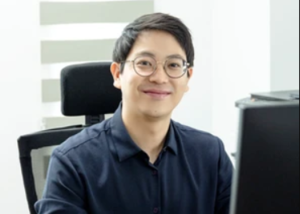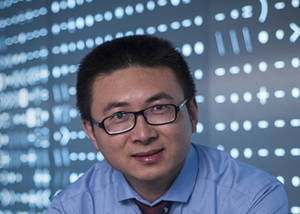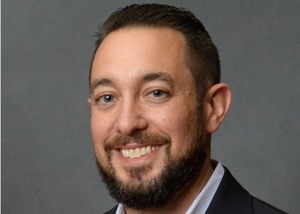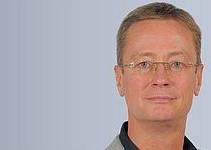Department Talks
- Dr. Vimal Kishore
- 2P04
Collective dynamics is referred to as the correlations in the cooperative motion of a many-particle system. It exists on all lengths and time scales and in different systems, ranging from bacteria to robots. Here, the interactions between large numbers of relatively simple individuals result in complex emergent global patterns. The success of these systems is typically associated with their functional robustness and adaptability against perturbations. Here I will discuss swarming with the help of different examples, as viewed from the perspective of the complex system. I will focus on achieving the collective dynamics and quantify it with the help of the information in an engineered system made of microscopic rafts spinning at the air-water interface.
Organizers: Metin Sitti
Next-generation Fiber-based Biomedical, Neural, and Robotic Interfaces
- 24 January 2023 • 11:00—12:00
- Seongjun Park
- 2R04 Werner Köster lecture hall
To investigate and control the biological/neural system, it is essential to develop the techniques and devices capable of recording and modulating cellular signals as well as freely moving inside the body. However, current interfaces are limited in many factors such as mechanical invasiveness, non-adaptability (flexibility/stretchability), less-functionality, and limited form factors. Naturally, there is a huge need for new systems allowing for precise manipulation and monitoring of cellular and neural activities with high adaptability and minimal invasiveness. Application of fiber-based interfaces fabricated by novel manufacturing skill, thermal drawing process (TDP) can be a solution to address these issues. This preform-to-fiber thermal drawing enables the broad range of functions achievable in multimaterial fibers that include sensors of optical, thermal, chemical, acoustic, and mechanical signals to 3D-from micro actuator and robot. Notably, the multifunctional fibers can be produced from polymers with moduli lower than that of metals and glasses, and with tunable cross-sectional geometry and dimensions on the micrometer scale, which suggests their use as minimally invasive interfaces to biological systems. In this talk, I will introduce various examples of fiber-based interfaces for biomedical and neural applications: (1) Flexible and stretchable fiber-based neural probes; (2) Fiber-type scaffold to help the tissue regeneration; (3) Fiber-based artificial muscle; (4) Multifunctional fiber-based robotic system. These technologies enabling a natural interfacing between biological/neural circuits and external Machines/computers contributes not only human health and welfare but also develop the future with hyper-connectivity.
- Prof. Dietmar Hutmacher
- 2R04
The quest for an advanced soft robotic actuator technology that is fast and can execute a wide range of application-specific tasks at multiple length scales is still ongoing. Here, we demonstrate a new design and manufacturing strategy that leads to high-speed inflatable actuators exhibiting diverse movements. Our approach leverages the concept of miniaturisation to reduce the required volume of fluid for actuation as well as fibre-reinforcement to improve the efficiency of actuators in converting delivered fluids into fast and predictable movement. To fabricate the designs, we employ a class of additive manufacturing technology called melt electrowriting. We demonstrate 3D printing of microfibre architectures on soft elastomers with precision at unprecedently small length scales, leading to miniaturised composite actuators with highly controlled deformation characteristics. We show that owing to their small dimensions and deterministically designed fibrous networks, our actuators require extremely low amounts of fluid to inflate. We demonstrate that actuators with a length of 10 to 15mm and an inner diameter 1mm can reach their full range of motion within ~20ms without exploiting snapping instabilities or material non-linearities. We display the speed of our actuators by building an ultrafast, soft flycatcher. We also show that our actuators outperform their counterparts with respect to achievable movement diversity and complexity.
Organizers: Metin Sitti
Towards robust and autonomous locomotion in cluttered terrain using insect-scale robots
- 22 September 2022 • 15:00—16:00
- Prof. Kaushik Jayaram
- 2R04
Animals such as mice, cockroaches and spiders have the remarkable ability to maneuver through challenging cluttered natural terrain and have been inspiration for adaptable legged robotic systems. Recent biological research further indicates that body reorientation along pathways of minimal energy is a key factor influencing such locomotion. We propose to extend this idea by hypothesizing that body compliance of soft bodied animals and robots might be an alternate yet effective locomotion strategy to squeeze through cluttered obstacles. We present some early results related to the above using Compliant Legged Autonomous Robotic Insect (CLARI), our novel, insect-scale, origami-based quadrupedal robot. While the distributed compliance of such soft-legged robots enables them to explore complex environments, their gait design, control, and motion planning is often challenging due to a large number of unactuated/underactuated degrees of freedom. Towards addressing this issue, we present a geometric motion planning framework for autonomous, closed kinematic chain articulated systems that is computationally effective and has a promising potential for onboard and real-time gait generation.
Organizers: Metin Sitti
- Prof. Xuanhe Zhao
- 2P04 (Stuttgart) and Zoom: https://us02web.zoom.us/j/82755712524
Polymers and water are the major components that constitute most living species on the earth, ranging from animals, plants, and fungi to bacteria. Polymers are also pervasive and indispensable in almost every aspect of our daily life, ranging from food, clothing, housing, and healthcare to transportation, communication and entertainment. Furthermore, over 6% of global electricity generated from coal is used to make plastics, and microplastics are already ubiquitous in global biosphere. Intrigued by their ubiquity and impacts, MIT Zhao Lab is focused on the study and development of soft materials and systems, mainly constituted of polymers and water.
- Renee Zhao
- 2P04
Millimeter/centimeter-scale origami robots have recently been explored for biomedical applications due to their inherent shape-morphing capability. However, they mainly rely on passive or/and irreversible deformation that significantly hinders the clinic functions in an on-demand manner. Here, we report magnetically actuated origami robots that can crawl and swim for effective locomotion and targeted drug delivery in severely confined spaces and aqueous environments. We design our robots based on the Kresling origami, whose thin shell structure 1) provides an internal cavity for drug storage, 2) permits torsion-induced contraction as a crawling mechanism and a pumping mechanism for controllable liquid medicine dispensing, 3) serves as propellers that spin for propulsion to swim, 4) offers anisotropic stiffness to overcome the large resistance from the severely confined spaces in biomedical environments. These magnetic origami robots can potentially serve as minimally invasive devices for biomedical diagnoses and treatments.
Organizers: Metin Sitti
Microrobotics to Micro Aerial Vehicles: Robots Interacting with the Environment
- 11 April 2022 • 11:00—12:00
- David J. Cappelleri
- 2R04
The Multi-Scale Robotics & Automation Lab (MSRAL) at Purdue University performs cutting-edge research on robotic and automation systems at various length scales: macro-scale (cm to m), meso-scale (~100's of um to a few mm's), and micro-scale (10's of um to 100's of um). All of the developed systems are designed to interact with the environment in unique ways. In this talk, I will discuss some recent MSRAL microrobotics projects on developing learned models for 2D micromanipulation tasks and different types of families of wireless mobile microrobots driven by external magnetic fields that we have developed over the years; Novel micro aerial vehicle designs and associated control schemes for 3D aerial manipulation tasks; and some recent work in mobile manipulation and agricultural robotics.
Organizers: Metin Sitti
Phosphonate-MOFs,-HOFs: Next generation of microporous compounds
- 09 February 2021 • 16:00—17:00
- Dr. Gündoğ Yücesan
- https://us02web.zoom.us/j/85745449460?pwd=WWF2NjdvWXp0SE1keVNsZW9TdTF4UT09
Among the other metal organic framework (MOF) familieis, phosphonic acids provide the richest metal binding for MOF synthesis, and they are known to exhibit exceptional thermal and chemical stabilities. Due to the synthetic difficulties, the total number of microporous phosphonate-MOFs are still limited in the literature. In this work, we provide design and synthesis strategies to form semiconductive, proton conductive microporous MOFs and hydrogen bonded organic frameworks (HOFs) constructed using structure directing arylphosphonic acids.
Organizers: Metin Sitti
Large-Area Fabrication of Nanoscale Features by UV-NIL @ JR MATERIALS
- 22 July 2020 • 14:00—15:00
- Dr. Dieter Nees
- https://global.gotomeeting.com/join/588789885
Roll-to-roll UV nanoimprint lithography (R2R-UV-NIL) gains increasing industrial interest for large area nano- and micro-structuring of flexible substrates because it combines nanometer resolution with many square meter per minute productivity. Small-area masters of functional nano and micro surface structures are readily available by various lithographic techniques like e.g. UV-, e-beam- or interference lithography. However, the upscaling of small-area nano- and micro-structured masters into medium size roller molds – often called shims - for R2R-UV-NIL production still remains a bottleneck in the large area nano-structuring process chain. At JR MATERIALS we have installed a customized EVG 770 UV-NIL-stepper and are developing step-&-repeat UV-NIL processes and materials for the seamless upscaling of small-area masters into polymer shims for our R2R-UV-NIL pilot line with dimensions of up to 270 x 630 mm2. These polymer shims can be used either directly for short to medium R2R-UV-NIL manufacturing runs or get galvano-formed into nickel-shims for real long run production. In this seminar the JR MATERIALS UV-NIL tools, processes and materials as well as a few applications will be presented.
- Prof. Antal Jákli
- 2P04
Motivated by the low voltage driven actuation of ionic Electroactive Polymers (iEAPs) [1] [2], recently we began investigating ionic elastomers. In this talk I will discuss the preparation, physical characterization and electric bending actuation properties of two novel ionic elastomers; ionic polymer electrolyte membranes (iPEM)[3], and ionic liquid crystal elastomers (iLCE).[4] Both materials can be actuated by low frequency AC or DC voltages of less than 1 V. The bending actuation properties of the iPEMs are outperforming most of the well-developed iEAPs, and the not optimized first iLCEs are already comparable to them. Ionic liquid crystal elastomers also exhibit superior features, such as the alignment dependent actuation, which offers the possibility of pre-programed actuation pattern at the level of cross-linking process. Additionally, multiple (thermal, optical and electric) actuations are also possible. I will also discuss issues with compliant electrodes and possible soft robotic applications. [1] Y. Bar-Cohen, Electroactive Polyer Actuators as Artficial Muscles: Reality, Potential and Challenges, SPIE Press, Bellingham, 2004. [2] O. Kim, S. J. Kim, M. J. Park, Chem. Commun. 2018, 54, 4895. [3] C. P. H. Rajapaksha, C. Feng, C. Piedrahita, J. Cao, V. Kaphle, B. Lüssem, T. Kyu, A. Jákli, Macromol. Rapid Commun. 2020, in print. [4] C. Feng, C. P. H. Rajapaksha, J. M. Cedillo, C. Piedrahita, J. Cao, V. Kaphle, B. Lussem, T. Kyu, A. I. Jákli, Macromol. Rapid Commun. 2019, 1900299.










